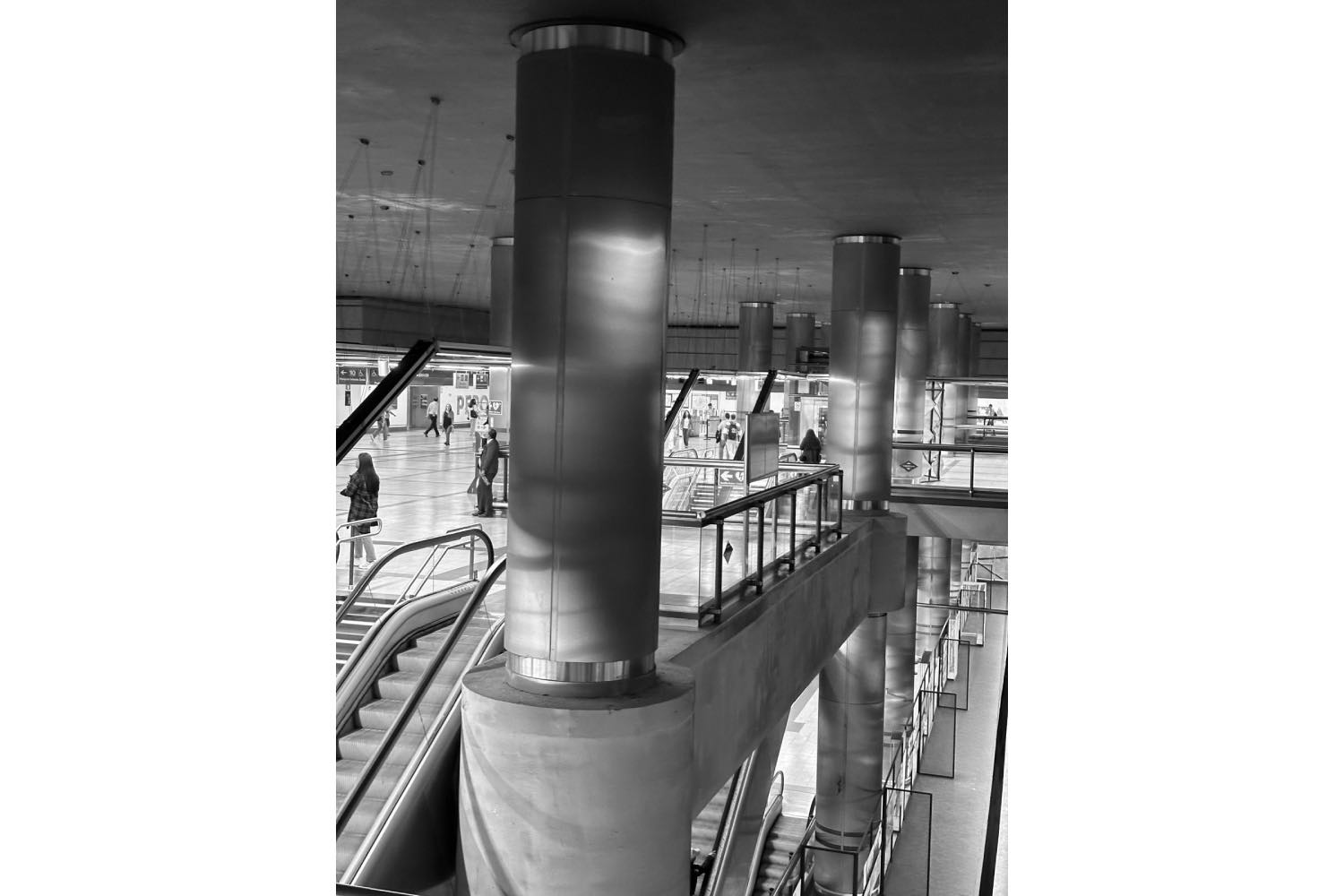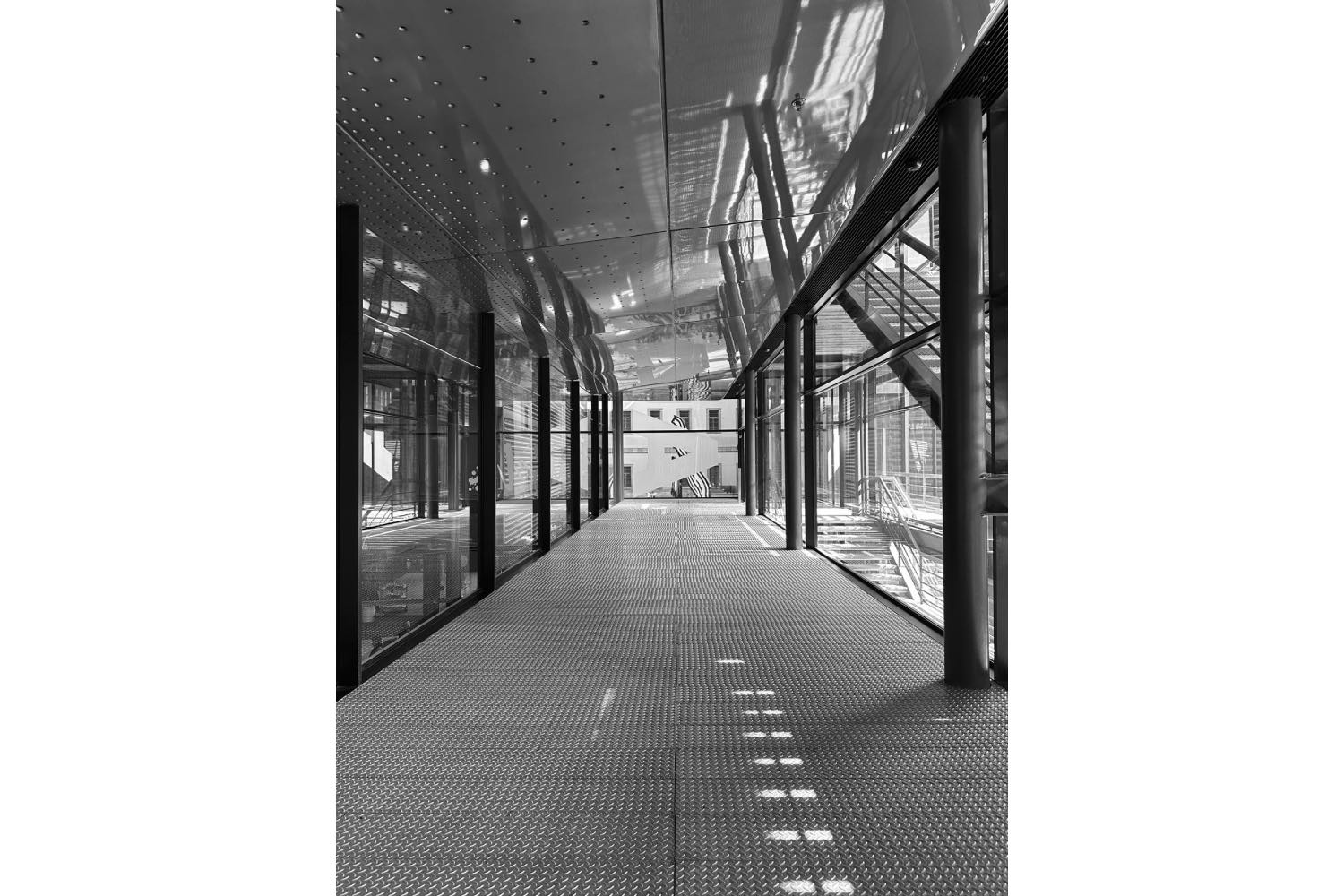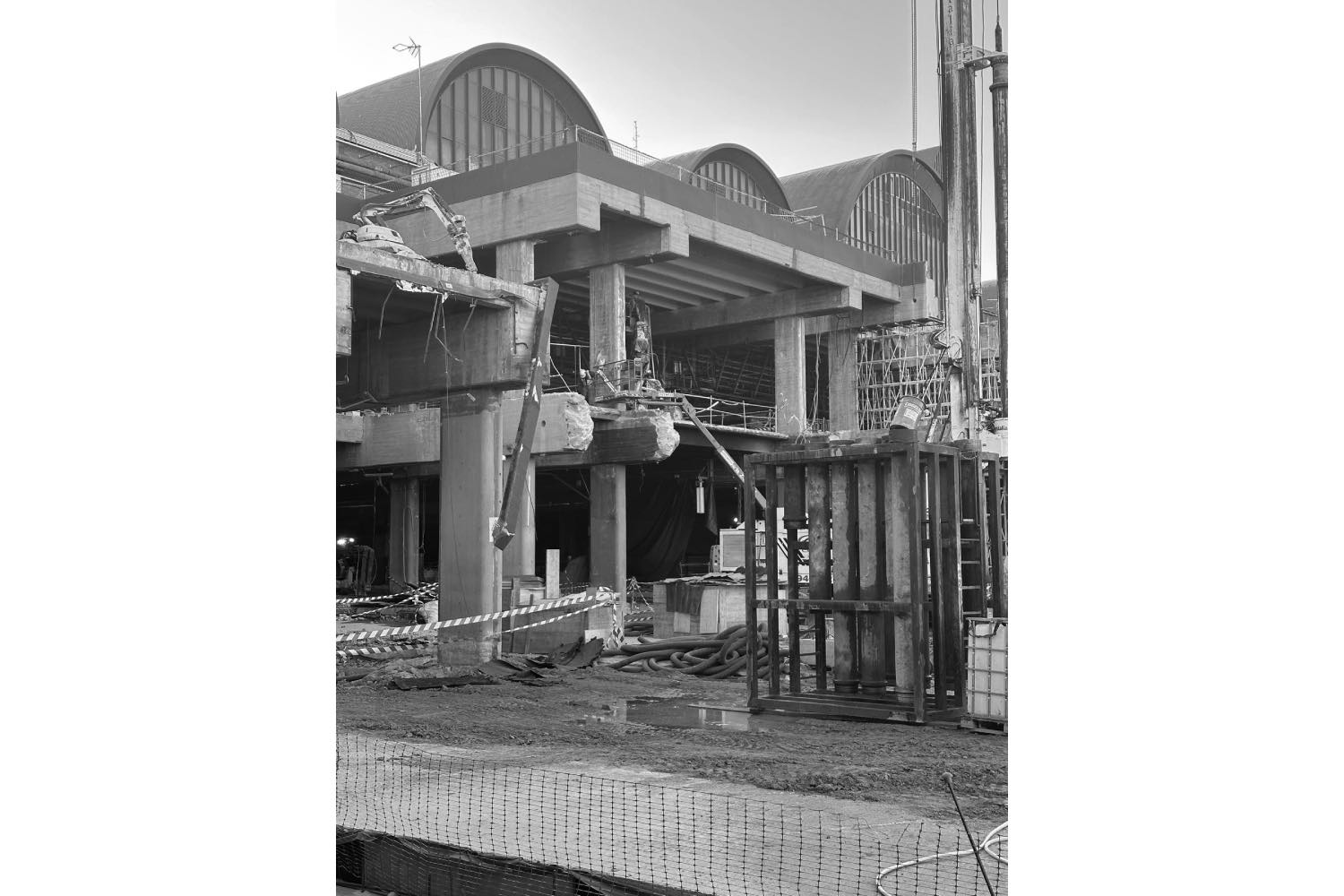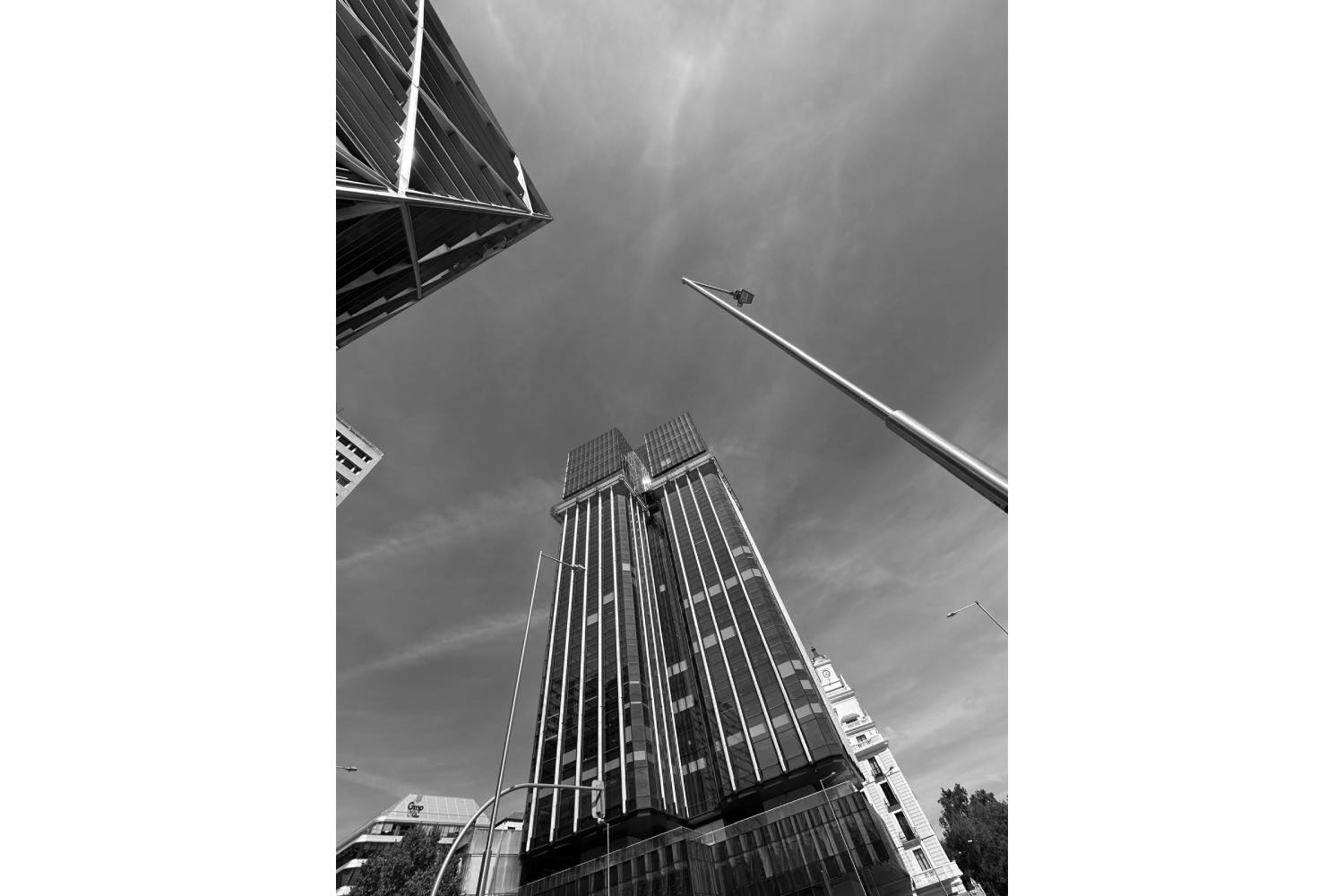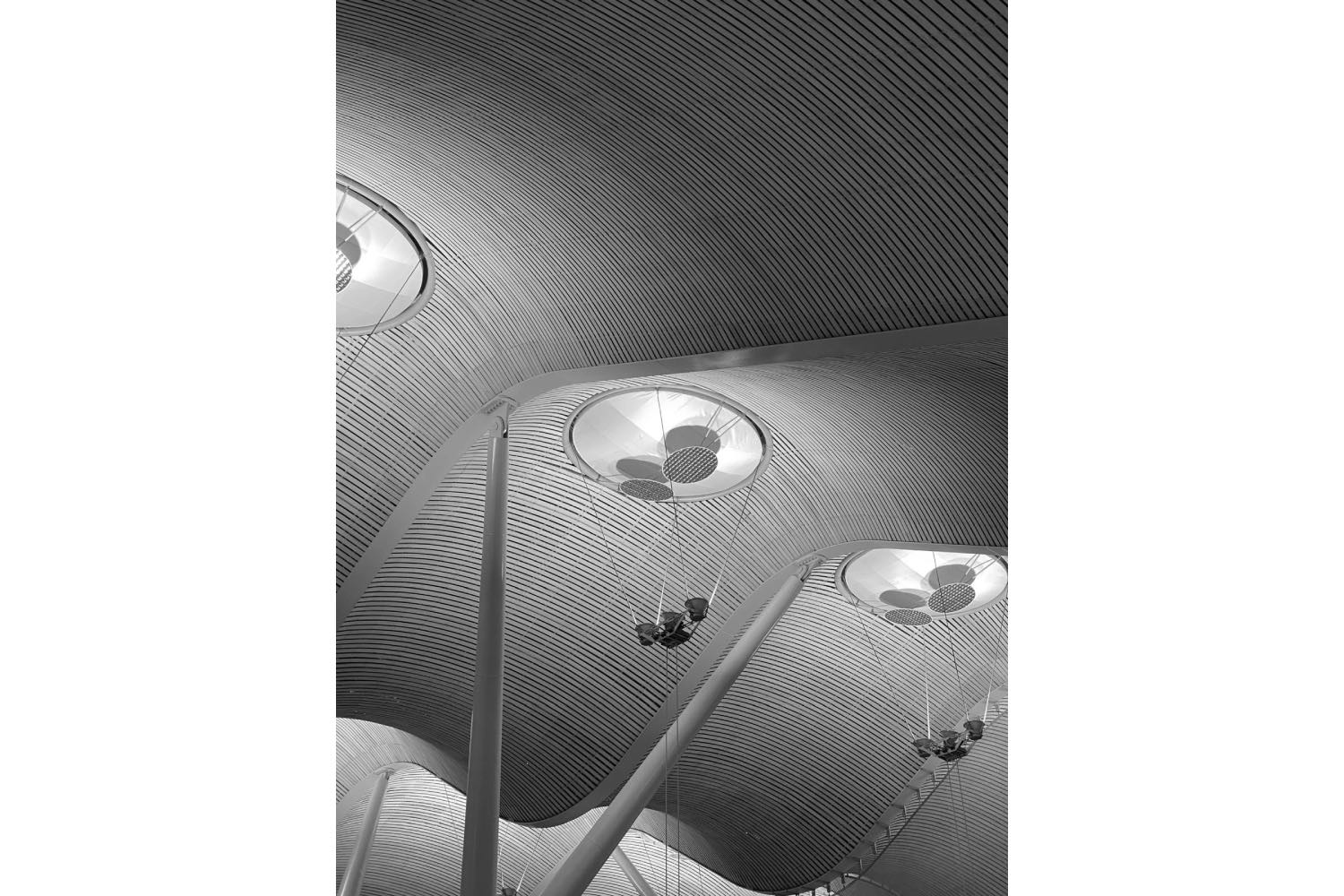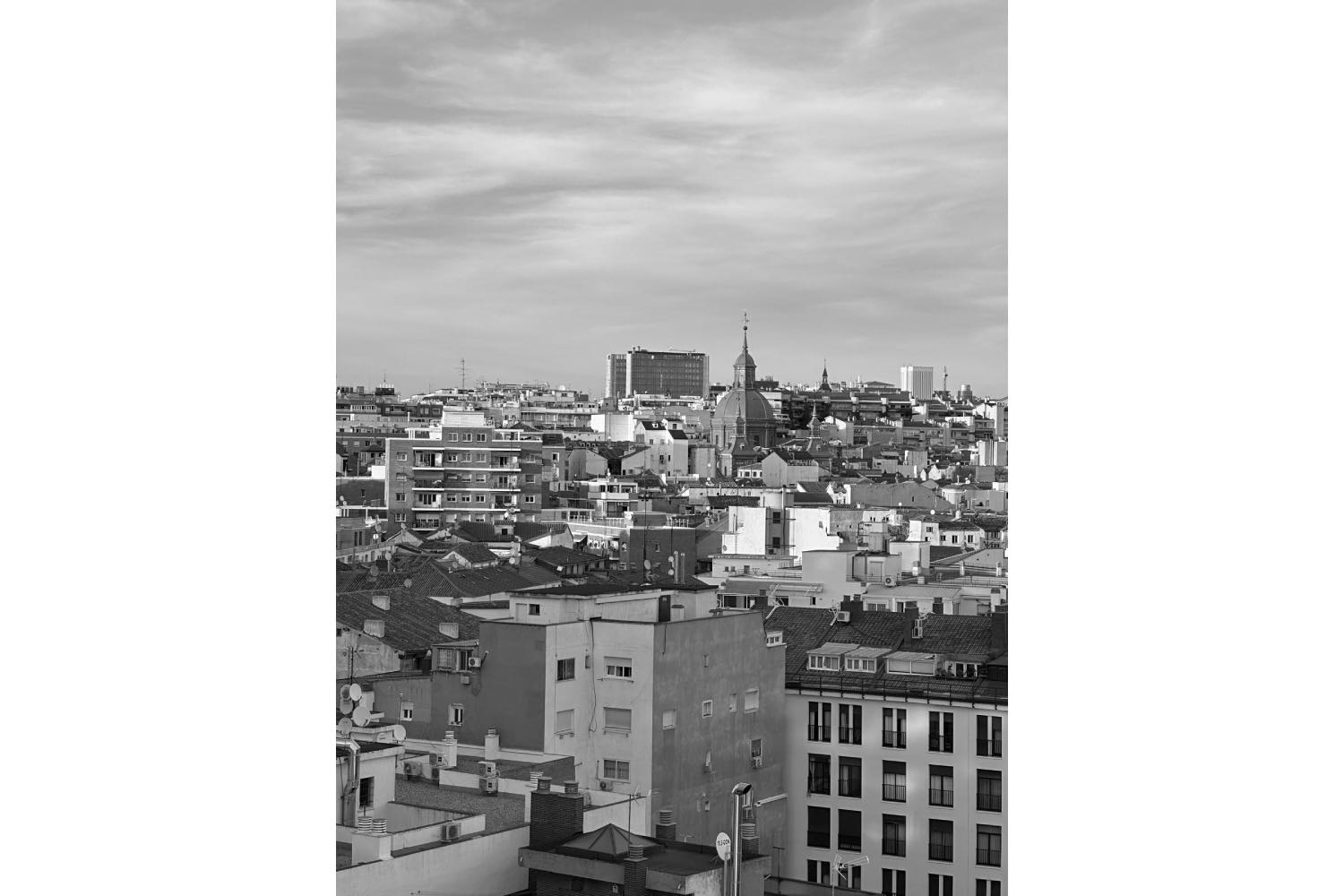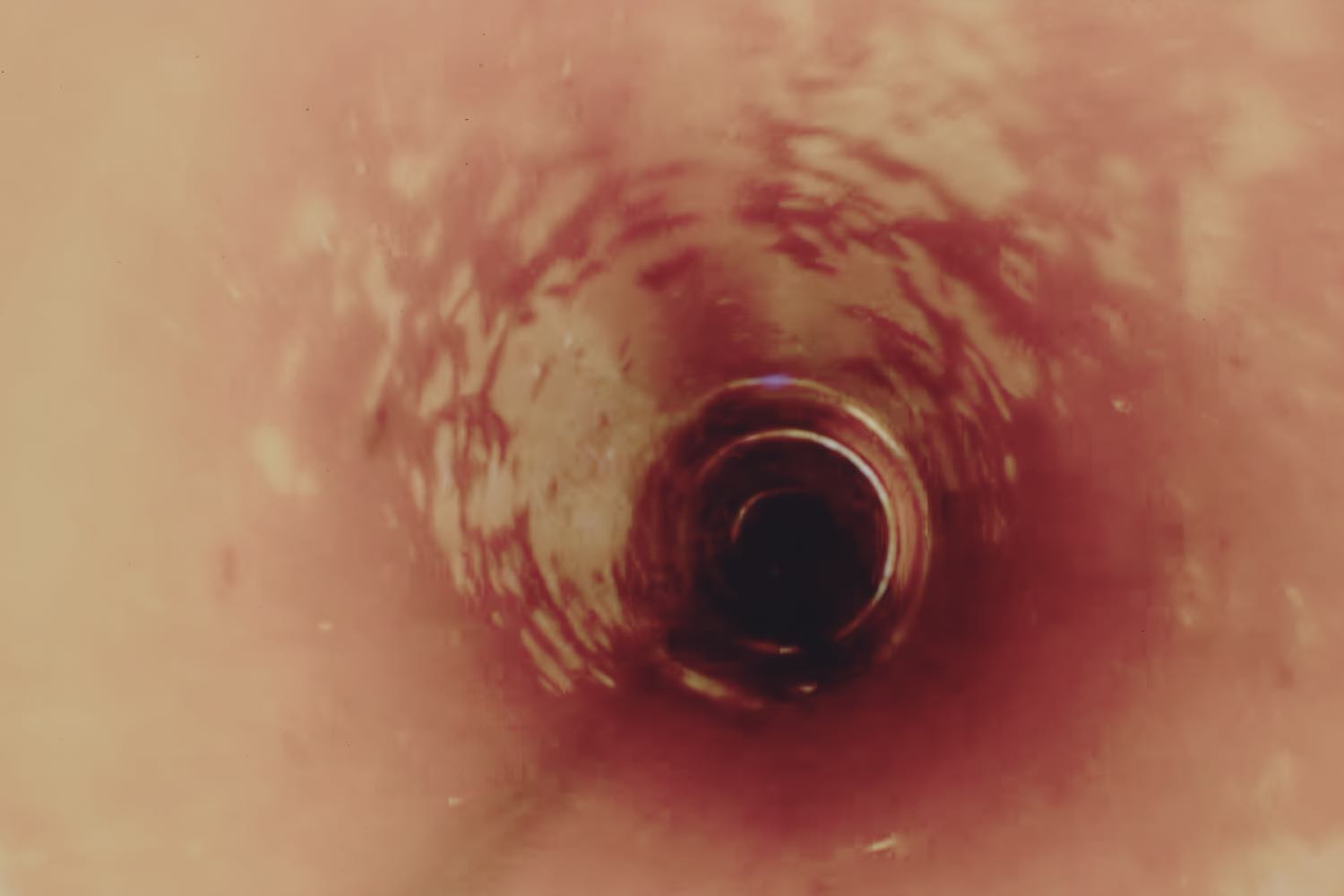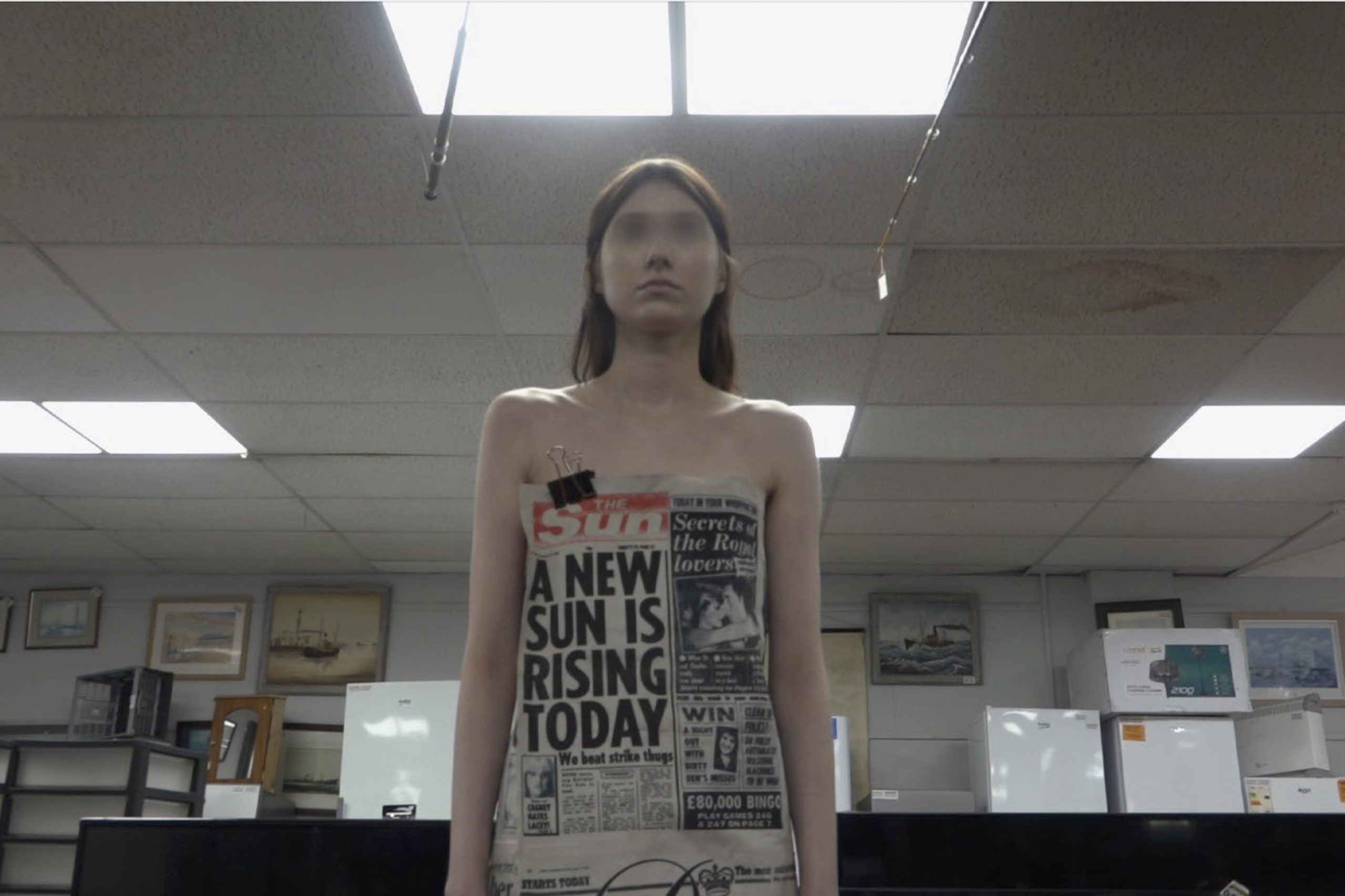“It did what all ads are supposed to do: create an anxiety relievable by purchase.”
– David Foster Wallace, Infinite Jest
Adam Gordon, the fictional poet from Ben Lerner’s 2011 novel Leaving the Atocha Station, was my first glimpse into life in Madrid. Gordon, an American exchange student in his early twenties, relocates to the Spanish capital with the lofty goal of writing an epic poem that interrogates the role of literature in the Spanish Civil War.
One of the book’s most memorable passages finds Gordon in the Museo del Prado, watching a Spanish man weep in front of a painting. He is disquieted by his own inability to experience such visceral responses to art. His relationship to art, he discovers, is alloyed by analysis – blunting the kind of internal stirring implicitly promised by the ambient sorrow of Velasquez or the gruesome revelations of Goya. This leaves him, a poet, stranded in the realm of prosaic close-reading, unable to access the emotional immediacy that art is thought to inspire.
Now that I live in Madrid, I suspect Gordon’s dilemma is emblematic of a broader issue. I, too, feel unwedged from reality when navigating the hallowed halls of the Prado or the Reina Sofía. But this isn’t an indictment of the art itself nor a reflection of the limits of modern imagination. Rather, it feels symptomatic of the city’s relentless technological growth.
Does Velasquez have any staying power in a city where a click-baity, context-agnostic, mood-board-oriented focus on interiority has proliferated, can Goya really compete in a city that has “entrusted its rational decision-making to the image,” where storefront is the final frontier for taste and culture and the flaneur is a customer above all else, where content creation is the north star of interior design, and architecture plays second fiddle even to that?1 Madrid is a labyrinth of tasteful shopping boutiques that meld into pristine dining experiences that merge into photogenic retail environments – each one self-referential and pandering to the insatiable appetites of an ever-expanding class of self-appointed tastemakers. How can you not feel catatonic?
Madrid’s most prominent, enduring architectural and urban narrative is a latently experienced reckoning with modernity. It suggests that, as much of Western Europe was ensnared by steely mechanization which changed the musculature of its architectural outputs, Spain, under Francisco Franco’s thirty-six-year-long fascist regime, was still fashioning an image that oozed a nostalgia for an imagined and illusory Spain. The problem with this framing is that it doesn’t take into account how permeable Francoist Spain was to pan-European influences, American military expansion, and soft diplomacy — and, of course, the Catholic church. This accounts for Franco’s purported tolerance of various architectural styles. This is not to say that Franco was impotent or spatially-unpersuasive. His impact was significant but not totalizing. Landmark projects like Edificio España — a towering ziggurat on Plaza de España — and its companion, Torre de Madrid, alongside housing developments in Carabanchel and Orcasitas and the expansion of Barajas Airport, stand as potent symbols of the regime’s power. But outside of these emblematic projects, all kinds of architectural experiments that fell outside the remit of the fascist states’ Corten steel fist proliferated. Rather than embodying a monolithic identity, Madrid emerged as a case of accidental pluralism, shaped by the competing forces of the Catholic Church’s Opus Dei, American influence, and Franco’s eventual embrace of tourism. This porousness debunks the myth of Spain as an isolated, hermetically sealed nation. Instead, its anxieties stemmed from the currents of global modernity infiltrating a society eager to self-actualize — fast.
When Franco’s regime fell, an ideological vacuum formed, quickly filled by a fervent embrace of progress. Madrid was poised to accelerate. By 1996, Puerta de Europa–the twin towers framing Paseo de la Castellana–injected the skyline with the kind of optimistic drama of a young democracy shifting into top gear. Along with it came four other towers belonging to multinational corporations in the business district Área de Negocios de las Cuatro Torres, erected in the early 2000s. This was the kind of bright-eyed confidence that could only be snubbed by an unforeseen global economic crisis. All the while, since King Philip II’s era, Madrid had used its trove of art collections as evidence of its grandeur and cultural supremacy. By boasting one of Europe’s most impressive collections, Prado was Madrid’s best soft power card. But by the time democratic Spain emerged as Europe’s energetic lodestar in the early 2000s, Madrid faced a dual mandate: to preserve its cultural legacy while modernizing at breakneck speed.
This tension is embodied by the contrasting dispositions of two of Madrid’s iconic boulevards: Gran Vía and Paseo del Prado. The rivalry between these two boulevards isn’t just architectural, but existential. Gran Vía was carved out of thickets of medieval urban fabric and rapidly developed throughout the twentieth century into a dizzying selection of theaters, cinemas, and department stores. Despite its part-Art Deco, part Neo-Baroque facades, it speaks of Madrid’s desire to shed its skin, to sprint forward with dogged futurism and relish in newness. By contrast, Paseo del Prado rests on its historical laurels. Each one services the city in different ways, but it often feels like a bar fight is ensuing between the spirit of the two boulevards. The battle between them feels eternal yet increasingly one-sided.
The Prado Museum itself, however, is a microcosm of the city’s search for identity (a term that has always been a red herring). It was conceived with the intention of housing the Royal Cabinet of Natural History but was opened in 1819 as the Museo Real de Pinturas, presumably due to the restoration of Ferdinand VII to the throne. Ferdinand, an eccentric patron of the arts with collections housed in the royal palace, elevated art to a symbol of national importance. Since its inception, it has undergone three extensions by Bosco, Sabatini, and Raphael Moneo, and is now in the midst of a fourth extension proposed by Foster + Partners. Each one of these extensions is emblematic of the city’s desire to find clarity in the haze of ideological uncertainty by using its most relevant architects as proxies to the present moment (Norman Foster is a de facto Spanish architect). Its pictorial memory–the contents–is one thing. The extension–its context–is a completely different thing, but they are both driven by additive operations. Moneo’s contribution, for instance, was driven by the addition of a cloister that “illuminates” the entire extension in an effort to “organize” everything that was built there previously. It is thought of as an “element that justifies everything that is built around it” — evidence of a state of urban confusion and a desire for additive retrospective coherence. But architecture is always behind. Its potency is paradoxically legitimized by its slowness and apparent stasis — its posture of stability and air of sobriety.2 The museum’s ballooning pictorial footprint is meant to be a restorative tonic for a city high on twenty-first-century euphoria in a “world stripped of architecture, in the same way that Richter’s paintings are scraped of paint.” In spite of, or perhaps because of, a desire for cultural legitimacy, the Prado’s influence on the surrounding neighborhood has been staggering. In the late ’80s and early ’90s, the Thyssen-Bornemisza and Reina Sophía spawned onto the Paseo. In the early 2000s, two younger forward-looking institutions were born: the Herzog & de Meuron–designed Caixa Forum was erected in the heart of the barrio, and just after that the Media Lab Prado in the neighboring district was inserted into an old Belgian Sawmill by Langarita-Navarro.
Best efforts considered, the search for coherence is undermined by a new regime of interior architecture, which considers only itself. The city’s trajectory echoes the prediction made in The Harvard Design School Guide to Shopping: Harvard Design School Project on the City (2002) that shopping “is the last form of public activity.” In 2025, this feels axiomatic, not just hypothetical. In the book, it’s argued that every aspect of social life and all manner of institutions are being swallowed up and disfigured by retail. Airports are shopping malls and museums are glorified gift shops and buying is a compulsory prerequisite for being in public. Madrid boasts 527 square meters of retail space per 1000 people. A number that grew by 13% in 2024, meaning ever more clubbing in computer-generated interiors, more sipping specialty coffee in artificially tactile monochrome boxes, more American steel wine bars, more Neo-Baroque facades masking infinite variety, and more and more and more, resulting in the same. There is an aesthetic republic for everyone, but otherness is not entirely welcome. In 2011, Andrés Jague’s Madrid-based Office for Political Architecture described this phenomenon at the domestic level. It produced an exhibition titled “IKEA Disobedients,” which argued that IKEA was the world’s most influential architectural actor and was particularly problematic for its promotion of homes as domestic “independent republics.” An excerpt from the exhibition rationale described the Swedish agent provocateur accordingly:
IKEA delivers societies. IKEA is a purveyor of social structuration. 98% of the people depicted in the IKEA catalogue are young. 92% of them are blond. They are either children, or busy having children. Everything IKEA manufactures is aimed at turning the sphere of domesticity into a sunny, happy, apolitical space inhabited by contented, healthy, young people.4
The proliferation of privatized, off-the-shelf interiors means that the public realm is subject to the same fate. At the urban level, society is being structured into homogeneity by a regime of private interests that operate like IKEA under the guise of architecture. The 2011 exhibition reminds us that a city that is truly affectionate will be achieved by “installing controversy and disagreement precisely at the site where affections may also emerge,” but the IKEAfication of Madrid persists stridently.
Madrid’s latest urban poster child is Madrid Nuevo Norte, a colossal project originally conceived to refurbish Chamartín, one of the city’s main transport hubs in the north. Over time, the proposal has grown to cover 2.3 million square meters in the city’s northern reaches, promising new residential, commercial, and green spaces in a former industrial and “underdeveloped” neighborhood. It is already by far the largest initiative in Europe and the clearest evidence of the scale of Madrid’s ambition (or hubris, depending on your politics). The initiative aspires to ensure that “90% of the housing and office blocks of Madrid Nuevo Norte will have street-level retail spaces,” meaning that nearly every corner of ground-floor public space will be conditioned by shopping.5 While that is a core feature of the project, its main tagline is “renovating Madrid while preserving its essence.”6 This means one of two things. The first is that the tagline is a seductive marketing ploy aimed at co-opting people who are suspicious of large-scale, centralized, top-down developments and people who want to preserve the identity of the city. The second is that the tagline is true and the administrators of the project already know full well that the essence of Madrid isretail first and everything else second. Identity versus retail – or identity as retail. Either way, Madrid Nuevo Norte is a glaring example of the city choking on the synthetic breast milk of progress.
Admittedly and unsurprisingly, Madrid has proven its capability with large-scale urban projects, notably the transformation of the Manzanares River into a sprawling park that spans ten kilometers along the riverbanks of the Manzanares River, starting from the Alto de Extremadura Bridge in the west to the Puente de la Culebra in the east. Completed in 2011, this green corridor serves as a vital lung for the city, offering recreational spaces untouched by the demands of retail. It’s demonstrative of a city that cares about public space, and is entirely vital for Madrid, as the city has the worst urban heat island effect in the world. Downtown Madrid is nearly eight degrees hotter than the Manzanares and El Retiro park, which are both only a few metro stops away. The city is uniquely unbearable in the summer. The Manzanares or the Rio (as it is affectionately called) along with the Paseo del Prado are the two urban talismans protecting the city from the entropic texture of progress and the damming effects of market urbanism.
It might be too late for a preface, but I should clarify: I genuinely enjoy Madrid. That said, my joy is mostly confined to spaces like the Manzanares or the Paseo del Prado, because stepping outside increasingly feels like stepping indoors. There is no shortage of things to enjoy, but the tyranny of sanitized interiors and perfectly calibrated beauty feels like “canned laughter,” like a ’90s sitcom that is far too aware of itself and employs a hypnotic laugh track to hide its shortcomings.7 The real effect is that all sensations and experiences are filtered through retail. Even anger has a retail proxy: in Madrid, rage rooms are proliferating. These are venues where you can pay to break things – printers, office chairs, and sometimes even cars. If that’s not the market economy coaxing you to feel like a pig being shocked with a cattle prod then I don’t know what it is.
When you’ve made it through endless gauntlets of shopping, and you find yourself in the Prado and nothing causes trepidation, it’s because the city that you’ve just emerged from is accelerating and doing everything in its power to stimulate you in an aesthetically neutral purgatory.

